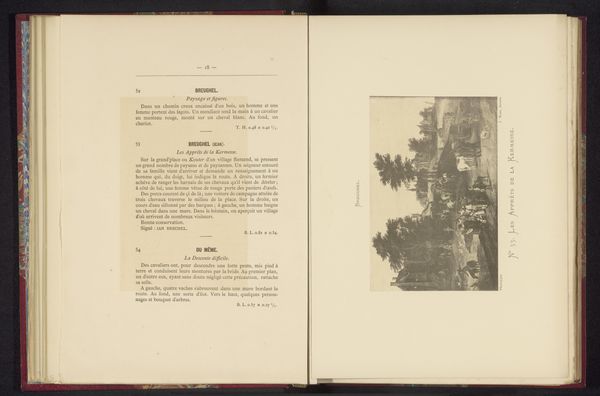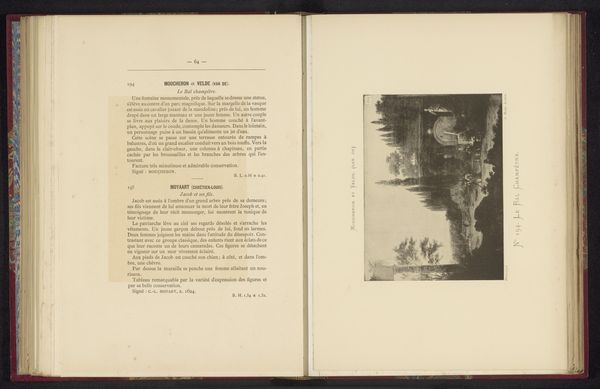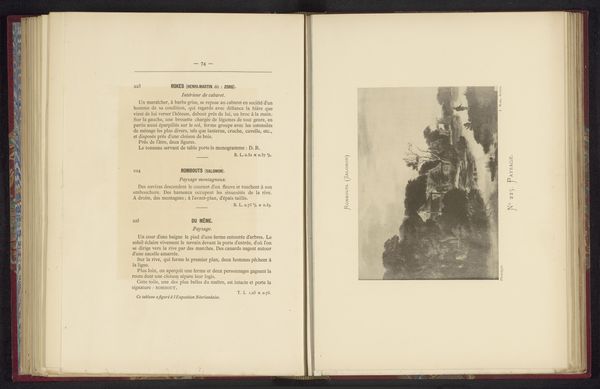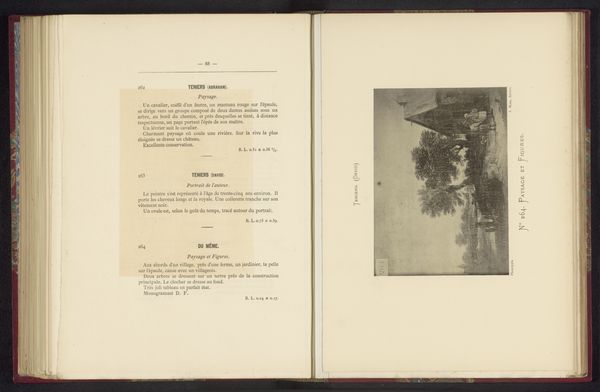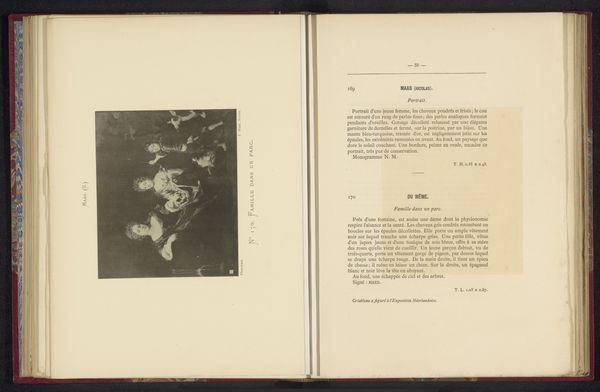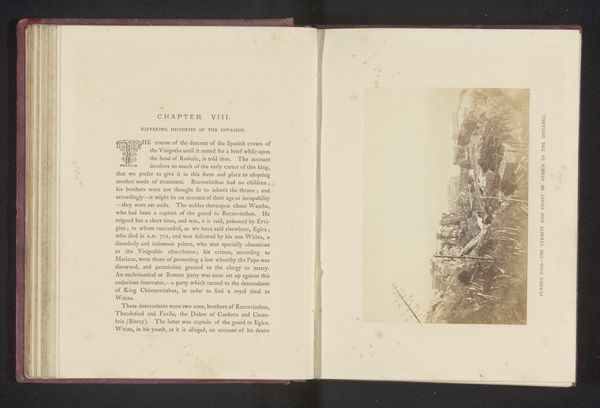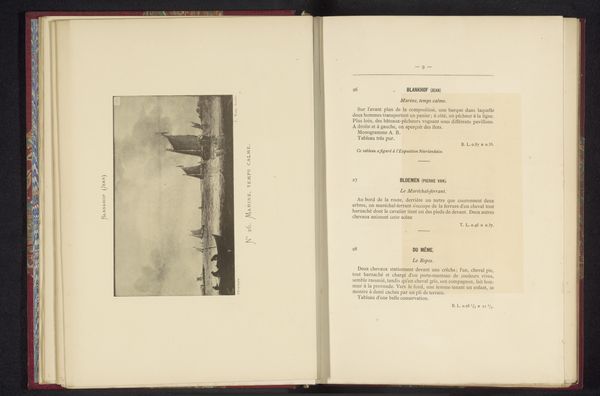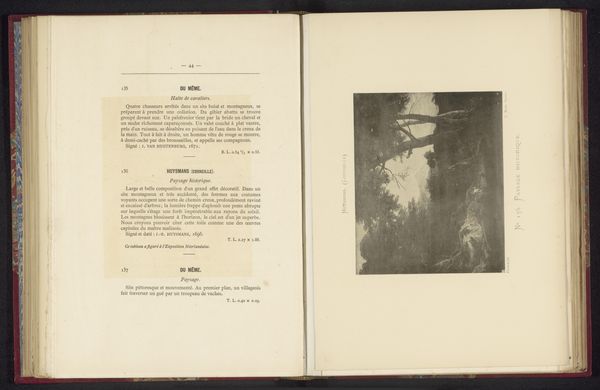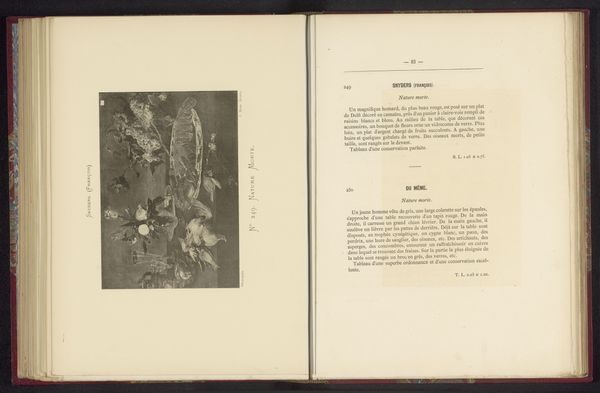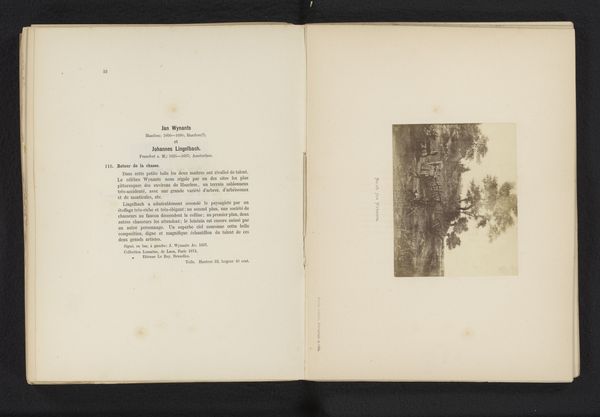
Reproductie van een schilderij van een onbekende vrouw met schapen bij in een landschap met een toren van Nicolaes Pietersz. Berchem before 1883
0:00
0:00
print, etching, photography
# print
#
etching
#
landscape
#
photography
Dimensions: height 120 mm, width 161 mm
Copyright: Rijks Museum: Open Domain
Curator: There's a delicate stillness to this one. It’s called "Reproductie van een schilderij van een onbekende vrouw met schapen bij in een landschap met een toren," which roughly translates to "Reproduction of a painting of an unknown woman with sheep in a landscape with a tower". The reproduction is from before 1883 and thought to be made after Nicolaes Pietersz. Berchem. Editor: Stillness is right! It’s the monochrome quality of the print and the subject itself. There is a lot of attention on architecture, specifically the structure of the tower, yet I cannot but help noticing how central those sheep are, given its name. I wonder about the conditions surrounding their farming, the labor division between sheparding and animal keeping? Curator: I see them nestled in, a gentle flock amidst an almost monumental scene. It sparks my imagination, like they hold some old pastoral secret. It makes me want to curl up in that tower like a fairy-tale character waiting to be saved or… not saved, maybe I'll just hang out, watch the sheep, feel the wind. It feels so self-contained. It uses both etching and photography mediums so that must've added steps and labor, especially back then. Editor: Precisely, "waiting" implies so much of their economy revolved around natural and environmental events. Given how materials matter and they inform so much labor, what kinds of pigments and acids would the photographer and etcher use for something like this back in the day? That tells a larger history of consumption and global resource chains. It wasn’t always as simple as pointing and shooting. Curator: You make me consider what is “original” here: Berchem's pastoral fantasy, or the careful labor that went into reproducing it. The unknown woman and the sheep that inhabit her day are so gently made. Maybe this act of reproduction breathes new life and meaning, or reveals a new intimacy through printed labor. Editor: I agree! Labor matters. Each line, shadow, highlight involves time, effort, choices shaped by economics, skill, and access to those resources I mentioned. The print medium invites copies that will in turn outlive this image and find life, hands, and ownership that will hopefully give new lives to this seemingly, delicate image.
Comments
No comments
Be the first to comment and join the conversation on the ultimate creative platform.
